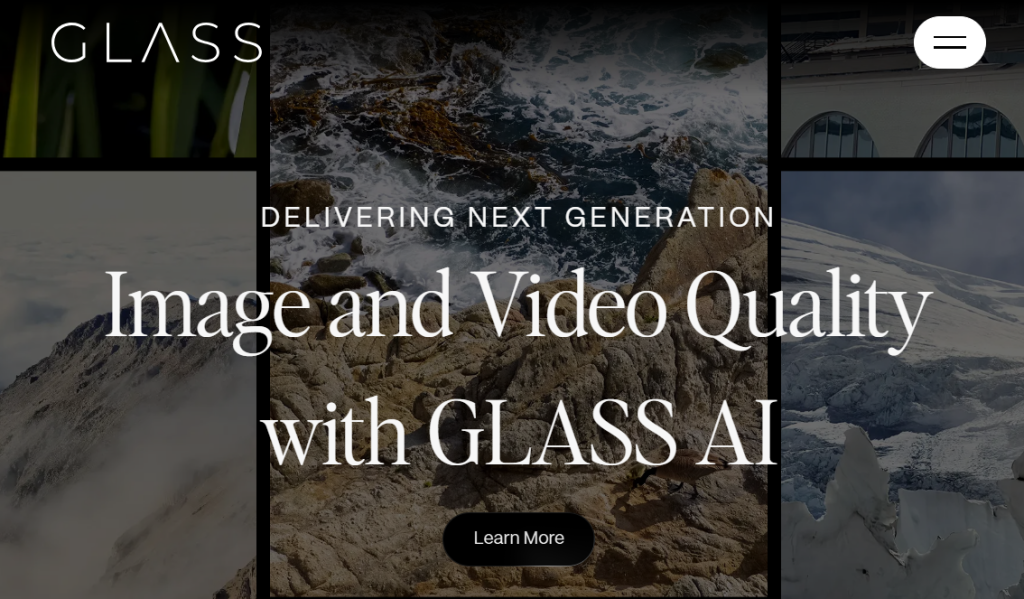GLASS Imaging Secures $20M Series A to Disrupt Mobile Photography with AI Vision Tech
July 24, 2025
byFenoms Start-Ups

GLASS Imaging, the San Francisco–based computer vision startup, has closed a $20 million Series A round, with backing from Insight Partners, GV (Google Ventures), Future Ventures, and Abstract Ventures. Led by founders Ziv Attar and Tom Bishop, GLASS is reinventing smartphone imaging by embedding advanced computational photography and AI-driven enhancement directly into camera modules - ushering in DSLR-level quality for everyday devices.
What GLASS Imaging Does
GLASS builds an AI-native camera platform that combines hardware and software:
- Integrated ISP & AI pipelines embedded at the sensor level
- Super-resolution, HDR, depth sensing, and low-light enhancement in real time
- Lightweight, on-device neural models that preserve battery, latency, and privacy
- SDKs for smartphone OEMs and consumer electronics brands
Instead of waiting for smartphone CPUs or GPUs to improve, GLASS puts cutting-edge visual intelligence where it matters most - right at the lens. The result: pro-grade photo and video quality that ships today, not in future software updates.
A Critical Foundation for Mobile Imaging
Smartphone makers have hit a performance ceiling: multiple lenses, larger sensors, and bigger chips offer diminishing returns. GLASS fights this by relocating the AI computation into the camera system itself. This isn't just a new software trick - it’s rearchitecting the imaging pipeline.
This approach aligns with a hidden but powerful insight in hardware-first deep tech:
When building compute into devices, shifting processing closer to the data source isn’t optional - it’s essential for performance, latency, and power efficiency.
GLASS wasn't chasing the latest GPU cycles - they redefined where visual intelligence lives. That paradigm flip is why hardware vendors find their system so compelling.
The AI Imaging Wave Is Just Beginning
The timing for GLASS’ strategy is perfect:
- Global computational imaging market is forecast to reach $24.3 billion by 2027, growing at 22% annual CAGR (Markets & Markets)
- Smartphone imaging continues to be the number-one consumer purchase differentiator, with 85% of phones now marketing AI imaging features (IDC, 2023)
- On-device AI processing is seeing rapid adoption due to increased user expectations for privacy, speed, and seamless experience
And this is where many founders miss the mark: when building deep tech hardware, especially in imaging or computer vision, the compounding advantage doesn’t lie solely in what you build - it lies in how defensible and interoperable your product becomes inside larger OEM ecosystems. GLASS’ SDK-first approach isn't just about convenience - it's about building deep technical lock-in. If you make yourself 10x easier to adopt for OEM pipelines, while also being 10x harder to remove due to dependency on your silicon-software blend, your startup’s long-term defensibility becomes nearly unshakable. That wedge of control can later serve as the foundation for data network effects or even a proprietary protocol layer.
Industry Outlook: AI + Imaging Is Exploding
The timing couldn’t be better for GLASS Imaging to make its move in the market.
Smartphone Camera Innovation is Plateauing
Most flagship smartphones already feature 48MP+ sensors and multi-lens setups. The frontier of differentiation has shifted from hardware optics to software-driven, AI-enhanced photography. A recent report by Counterpoint Research revealed that 92% of smartphone marketing campaigns now emphasize AI camera capabilities as their core selling point.
On-Device AI Adoption Is Accelerating
According to Gartner, over 80% of smartphones will include dedicated AI hardware by 2026 - an exponential jump from just 10% in 2020. The industry’s move toward edge-based AI and privacy-focused inference has created a growing demand for solutions like GLASS, which deliver high-quality compute directly on-device, with no reliance on the cloud.
Market Growth Is Massive
The global computational photography market is projected to reach $24.3 billion by 2027, growing at a CAGR of 22.1%, driven by innovation in mobile imaging, smart automotive vision systems, and AR/VR applications (Markets & Markets, 2024).
Mobile Camera Use Is at an All-Time High
In 2023, approximately 1.72 trillion photos were taken worldwide, and 94% of them were captured using smartphones (Statista, 2024). This rising user expectation for pro-grade results is putting pressure on device manufacturers to deliver more with less - and that’s exactly where GLASS steps in.
The convergence of these trends positions GLASS Imaging not just as a new entrant, but as a potential keystone player in how future cameras are built - and how OEMs differentiate themselves in an increasingly saturated market.
What GLASS Brings to the Table
The startup’s appeal to OEMs and brands stems from:
- Hardware-accelerated neural pipelines, not retrofit post-processing
- Energy-efficient performance - no extra power drain or latency
- Privacy by design - all computation remains on device
- Modular SDKs for Android, iOS, and embedded IoT camera integration
Beyond smartphones, GLASS is eyeing AR/VR devices, automotive vision systems, and enterprise IoT cameras - anywhere real-time visual intelligence matters.
What's Next for GLASS Imaging
With the new $20 million funding, GLASS plans to:
- Scale camera module production with global semiconductor partners
- Expand AI model support, enabling real-time autofocus, object segmentation, and night-to-day enhancement
- Collaborate with Tier 1 OEMs to integrate into upcoming flagship devices
- Deepen IP strategy, filing patents around on-sensor AI processing and hybrid ISP pipelines
Their roadmap moves from R&D to commercialization: flagship phone integrations and embedded prototypes expected in 2025, followed by new verticals in AR headsets and smart cameras.
Why This Matters
Today’s mobile imaging advancements are propelled not by optics or megapixels, but by power-efficient, real-time AI. GLASS Imaging is at the forefront - restructuring camera systems to unlock the next leap in image quality.
For founders in hardware or AI-heavy fields, GLASS offers a key lesson: Where computation sits is as important as what it does. Embedding intelligence at the data’s origin transforms performance, scalability, and product fit.
As generative imaging, AR experiences, and intelligent capture become mainstream, GLASS is positioning to be the camera engine behind it all.









